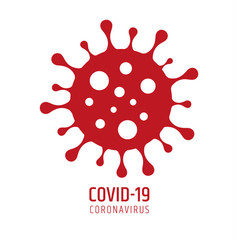The Role of Physical Therapy in COVID-19 Recovery
by Pamela Guevarra, PT, DPT, CCI, Cert. D.N.
AzOPT Buckeye Physical Therapist
Researchers and healthcare professionals continue to learn more each day about the coronavirus that has uprooted our daily lives. While more is still to be learned, one thing for certain is the role physical therapy plays in helping patients recover. Whether you were asymptomatic or experienced a prolonged hospitalization, physical therapy is a vital part of the team that will help you restore your everyday function.
During a prolonged hospitalization, you can anticipate much time on bed rest, which causes decreased physical function and deconditioning of the body. This is true for any type of prolonged hospitalization, not just COVID. A decrease in physical function results in muscle weakness, low endurance, fatigue, atrophy (loss of muscle), and poor balance.
Deconditioning can be classified as mild, moderate, or severe. Mild deconditioning is the difficulty in doing high-level activities like playing sports. Moderate deconditioning is the difficulty in doing activities like walking, shopping or household chores. Severe deconditioning is the difficulty in taking care of one’s self.
Prolonged bed rest affects the musculoskeletal system mainly through postural or weight bearing muscles. There is also loss of balance and loss of strength in upper extremities like the hand grip. There is a loss of up to twenty perfect of muscle strength per week of immobilization.
Physical therapy in an outpatient clinic like AzOPT begins with a full evaluation performed by a licensed physical therapist to assess your general fitness and endurance level. Through this assessment, an individualized program will be developed to improve your physical function. This program will consist of exercises, activities, and therapy to improve strength, balance, posture, and mobility. Proper body mechanics and energy conservation techniques will also be discussed and practices. Gait training will be added, too, if necessary.
Aerobic activity will initially begin at less than 3 METS (metabolic equivalent of task) then progresses as tolerated. A MET is a unit of measurement that estimates the amount of energy used by the body to accomplish a task. Less than 3 METS are light intensity activities like walking slowly, cooking, washing dishes, or sitting to use a computer. By comparison, a moderate intensity of 3-6 METS is walking at a faster pace, vacuuming, mopping, or bicycling. More than 6 METS is considered vigorous intensity. A better example is for those who golf. Carrying clubs is approximately 5.1 METS, pulling a cart is between 3-4 METS, and riding in a cart is 2-3 METS. Yoga, which I highly recommend for its breathing and relaxation purposes, is approximately 3.2 METS.
Shortness of breath which limits your function should be monitored during exercises. Here are things to consider during exercises to avoid fatigue
- Aim for 20-30 minutes of aerobic exercise 3-5 times per week. It is important to incorporate 2 minutes of break in between sets or exercises to help manage shortness of breath and fatigue. Breathe deep and slow during breaks.
- Avoid isometric exercises above the chest and avoid overhead exercises initially, especially if you have hypertension.
- Drink warm water instead of cold water to avoid tightening of the chest.
- Keep breathing during exercises. Oxygen should be within reach.
- Stop exercising if you begin a coughing attack. Take a break and monitor vital signs.
- It is important to work on strengthening muscles that are weak from bed rest.
These vital signs should also be monitored when treating patients after hospitalization from COVID -19:
- Oxygen Saturation (SaO2) – measured using a pulsoxymeter. Patient’s oxygen saturation should not go below 95%. It is best to consult the doctor if it is equal or less than 90%.
- Blood pressure this should not be below 90/60 mmHg or more than 140/90mmHg
- Pulse rate – Pulse rate should not be more than 100bpm.
- Temperature – should not exceed 37.2C or 98.9F.
Your physical therapist will also monitor excessive fatigue, chest pain , dizziness, blurred vision, palpitations, severe cough, sweating, and headache. If you, or someone you know, is recovering from COVID, please call AzOPT to schedule your evaluation once your physician has cleared you from infection. We hope everyone remains safe during these uncertain times.
References:
Jaffri, A and Jaffri, U. (2020).Post-Intensive care syndrome and COVID-19: crisis after a crisis? Retrieved September 9, 2020 from https://www.ncbi.nlm.nih.gov/pmc/articles/PMC7301100/#:~:text=It%20has%20been%20reported%20that,their%20mobility%20and%20social%20responsibilities.&text=These%20are%20startling%20statistics%20and,to%20recognize%20as%20of%20now.
Sheehy, L. (2020) Considerations for postacute rehabilitation for survivors of COVID-19. Retrieved September 9, 2020 from https://www.ncbi.nlm.nih.gov/pmc/articles/PMC7212817/
Deconditioning. Retrieved September 9, 2020 from https://www.elsevier.com/__data/assets/pdf_file/0016/1023622/Deconditioning_140520.pdf
Measuring physical activity. Retrieved Septemeber 9, 2020 from https://www.hsph.harvard.edu/nutritionsource/mets-activity-table/







